The Donald Trump of Mexican Wrestling
How one American is channeling national anger in lucha libre and looking to revitalize wrestling in the U.S.

The lights dim in the Arena Coliseo in Guadalajara and a troop of ring girls emerge from backstage. A spotlight scans into their midst, revealing a blond giant with an American flag propped on his shoulder. The color guard of girls sticks with him as he walks towards the ring and the lights come up, revealing a giant Trump face printed on the flag and stars and stripes airbrushed onto his tights. A masked wrestler stands with his back to the newcomer, pumping up the crowd. Waving the girls away, the American creeps up behind him and beats the Mexican wrestler to the ground with the flag while the crowd howls in disapproval. The giant is Sam Adonis, maybe the most perfect gringo to come down to Mexico to fight in lucha libre.
Adonis was born Samuel Polinsky in Monroeville, Pennsylvania in 1989, the son of Dan Polinsky, of a Pittsburgh wrestling promoter. Alongside his brother Matthew (AKA Corey Graves, now a WWE announcer) Polinsky wrestled with promise at a few regional outfits in the U.S. without much success. A move to Europe boosted his standing, but it in Mexico, where he’s been wrestling since the middle of last 2016, that he finally hit his stride.
Adonis came to Mexico as a rudo, the lucha libre equivalent of a heel, and he lit on his current act when the election rolled around. “I had no idea it would work that well,” says Adonis, about the Trump shtick, which has made him one of the most bankable rudos in Mexican wrestling. “It’s almost something like “South Park” would do, you know. It’s in your face and it’s political, and at the same time, it’s just “South Park.” That’s how they look at it here…I knew it would be a sensitive topic, but I knew that I could make it work.”
Donald Trump has been a hot-button issue for Mexicans (“They’re bringing drugs. They’re bringing crime. They’re rapists”) since he announced his candidacy in the summer of 2015 and the Adonis character makes full use of that bad feeling. The American element is a more international angle than you normally see in Mexican wrestling, but it has ended up fitting in with the aspects of societal discontent and catharsis that have always been a part of lucha libre.
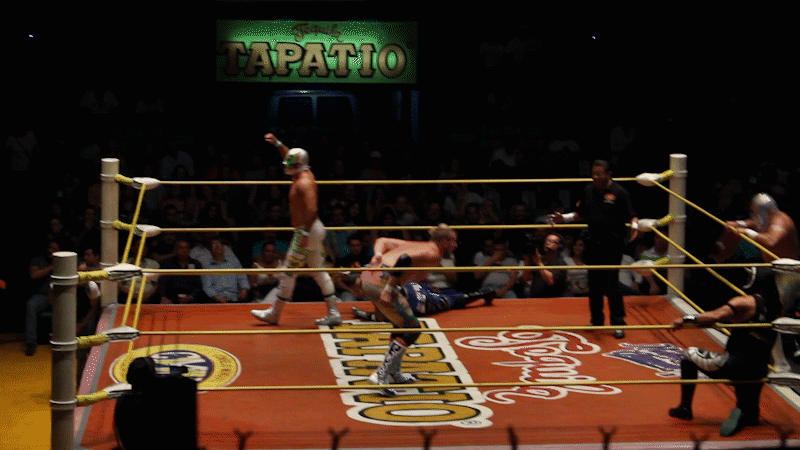
What goes on in the ring at the Arena Coliseo in Guadalajara or the Arena México in the capital would be more or less familiar to anyone in the U.S. who’s seen a little pro wrestling or who caught “GLOW” on Netflix. The moves are a little more acrobatic, the fighters are often masked and sometimes they fight for the right to shave each other, but the general outline’s the same. It’s what happens around the fighting that might surprise someone on their first trip to las luchas.
The audiences always breaks down along economic lines. While ticket prices aren’t that different, the social divide between the upper, ‘cheap’ seats in the arena and the more expensive spots around the ring on the floor, is total. The floor is for dilettantes, giggling foreigners, and the much-reviled wealthy, even if most of the people actually filling those seats wouldn’t push past the Mexican middle class.
The nosebleeds, fenced behind chain-link to keep projectiles to a minimum, are real fans, grouped into porras (similar to organized hooligan cheering sections in soccer) with uniforms and drumlines. While in the arena, they’re committed to a blue-collar image, even if in many cases they’re as well-to-do in their real lives as anybody sitting on the floor. More than anything, though, the cheap seats hate those dirty bastards down below.
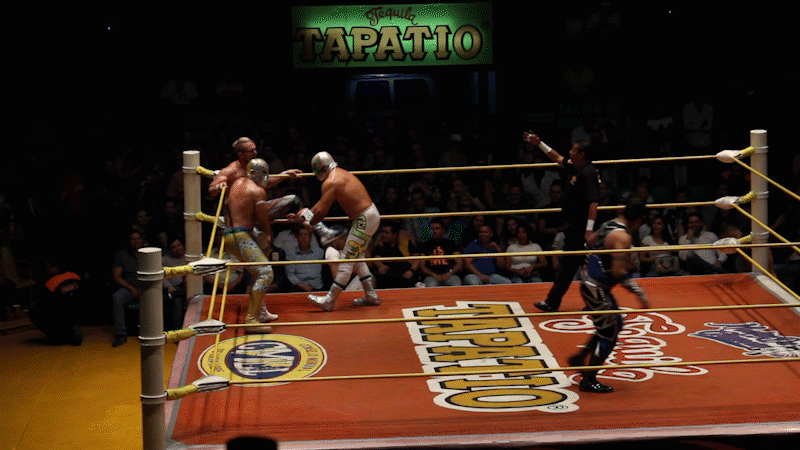
Adonis’s act is just another, more nationalist element on top of the societal passion play that is a Tuesday night at the luchas. Men in t-shirts reading “100% Poor, and Proud” scream, “¡Solo, solo, solo como pendejo!” (“Alone, alone, alone like an asshole”) at the people down below, pointing out that their wealthier counterparts come to the shows in twos and threes while up in the cheap seats they arrive in force. When the nearest floor seats turn to yell, “It’s late, you’re gonna miss your bus!” The bleachers retort, in unison, “Don’t worry, I came with your mother!” When Adonis is on stage, though, cheating and blindsiding his good, Mexican opponents in full American regalia, all eyes and insults are turned his way.
“The key is making people believe,” says Adonis. “To get them to come and throw every ounce of passion they have at you.” The audience comes to get riled up at the fights, and it’s a testament to Adonis’s prowess that he gets their repeat business even as a villain. “If they have a hard time at work during the week or they’re in a fight with their girlfriend,” Adonis says, “They want to go spend three hours screaming and relieving stress.”
While superficially, Adonis is all about Trump, once he’s in the ring, the wrestling takes over. Adonis hams it up as a dickish pretty boy, salsa dancing away from downed opponents and mincing around the ring on the attack. His bravado turns to cowardice several times a match, with the Mexican audience cheering as this massive gringo gets on his knees to plead with wrestlers and refs alike for mercy. The cries of joy often enough turn to howls of anger as he uses that clemency to sneak around the ring and strike from behind.
“I can wrestle and piss them off so bad, but they remember me. So they come back and say, ‘Oh yeah, I remember this guy, he’s a real ass.’ And they get into it again. Three weeks later, they do it again. And then, after let’s say six months, they start remembering. ‘Why is it every time we go, my favorite part of the night is that asshole? Maybe he’s not a bad wrestler, maybe he’s really good. I like that guy.’”
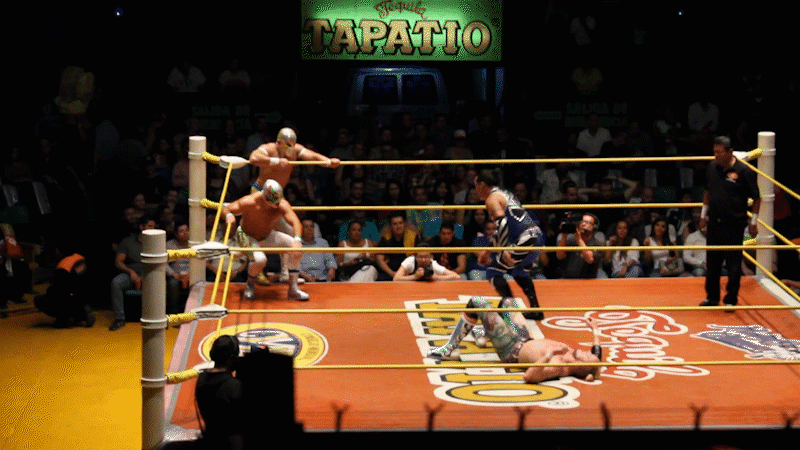
Adonis’s success in Mexican wrestling depends more on experience and native talent than the strength of any given gimmick. Adonis was born into the wrestling word, and a career that has already spanned three continents has put him in touch with most of the pro-wrestling styles on offer. Compared to the comparatively staid and rule-based fighting in Europe and the US, though, lucha libre can be tough for an American: “It is just chaos. There’s six guys just going at it. It doesn’t really make sense, the referees are breaking rules. That’s just what it is.”
The freewheeling nature of the fighting is what allows Adonis to pick his moments, sneaking up behind the good guys to whip them in the crotch with a historical symbol of Mexican oppression.
Lucha masks and paraphernalia are everywhere in Mexico, not just in the tourist kiosks but in open air tianguis where only hometown feet tread; they crowd costume shops at the mall, but also hang around near checkout at tonier stores like Suburbia or Sears. You can’t spend a day watching TV without finding out that there’s a whole subgenre of silver age cinema that revolves around permanently masked figures like Blue Demon and El Santo, the latter of which was buried in his disguise. More than anything though, and more radically different from the United States than its presence on screens and store shelves, las luchas are a just a place that you might go to on any given night. A place where you might see groups of friends or young people on dates or whole families with kids, like a bowling alley in the Midwest. Maybe it’s not most folks’ first choice on a Tuesday, but a place they might think of and where they’re happy to be once they get there.
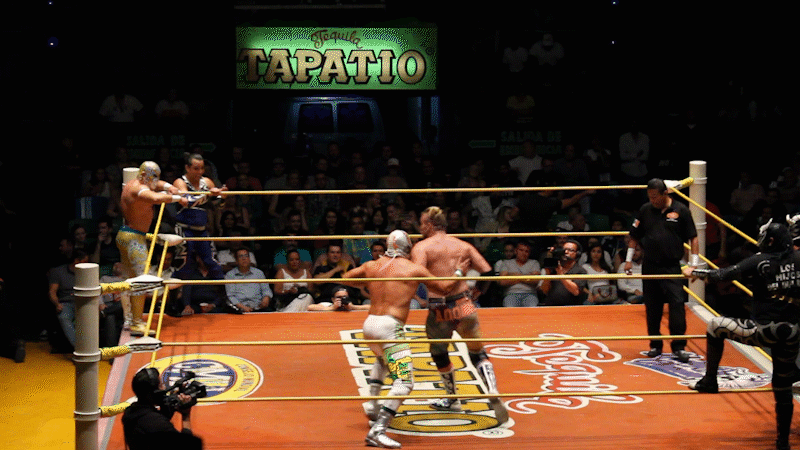
I first saw Sam Adonis after one of those “It’s a Tuesday, what do you want to do” conversations last summer. But I only discovered Adonis’s interest in lucha’s cultural position when I asked him about something he’s said to other interviewers in the past—that he wants to “resuscitate” pro-wrestling in the United States. “I can’t exactly say ‘resuscitate’ because wrestling’s still a billion-dollar industry,” he hedges, “But I would just like to go a different route, I’d like to create a new audience.” The problem is that ‘new wrestling,’ as he calls it, has gotten to be narrowly focused on the savvy wrestling fan rather than the public at large and the grand spectacles of the past.
“It’s something that’s been lost. You used to have to have a super strong villain in order to sell your superhero. All you have to do is look at your Batmans, your Spidermans. You really have to believe that Bane could beat Batman in order to get into that.” Instead of playing up their characters and the drama that they’re supposed to be a part of, “Now, a lot of the wrestlers are more worried about keeping that core fan happy.”
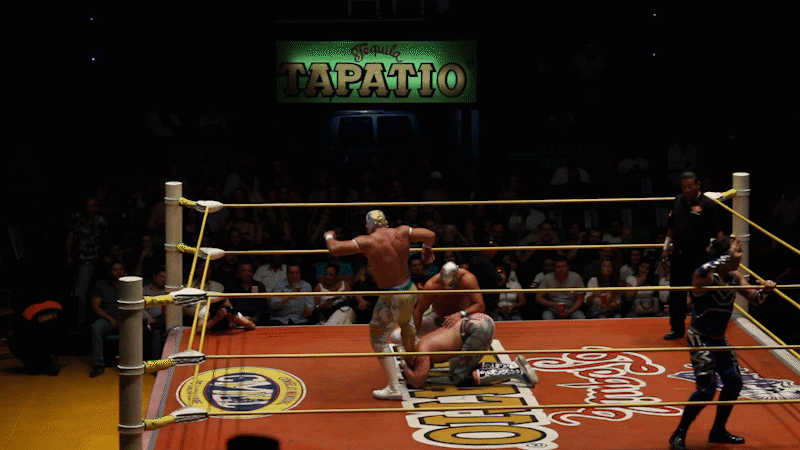
While luchadores in Mexico are committed to living behind their masks and inhabiting their characters, good or evil, “People would rather have the reputation for being a good wrestler instead of being hated and selling tickets and creating an energy.” That attitude, says Adonis, doesn’t hurt just sales, but what used to be pro-wrestling’s more mainstream appeal. With American heels and faces both shooting for cool rather than the drama that black-and-white conflict brings out, something’s gone missing. Adonis points to the ’80s wrestler Iron Sheik as an example of a classic heel, along with the public engagement and audience attendance that came with it.
The Iron Sheik (the basis, in part, for Alison Brie’s character on “GLOW” and the Ayatollah in The Wrestler) fought along similar lines as Adonis, only inverted. He brought an Iranian flag into the ring while tempers were still running high over the hostage crisis, wore “totally illegal” pointed, Aladdin-looking boots, and sometimes took a time out to pray to Allah after landing a particularly vicious sucker punch on a patriotic favorite like Sargent Slaughter. All of which got American audiences riled enough to believe in the matches, if only in the moment, at a time when kayfabe was becoming an increasingly open secret.
Inasmuch as anti-Iranian sentiment would probably play almost as well in the U.S nowadays, the exact nuances of the Iron Sheik’s act come off as more than a little distasteful today. There is at least one modern wrestler following in his footsteps in the U.S., and that’s Jinder Mahal, of India, who plays up the foreign element without the attendant racist tropes.
“Jinder Mahal makes you believe,” says Adonis. “A lot of these wrestling fans live and die by the internet, and Jinder Mahal, they all hate him. But they don’t realize. They hate him because they think he’s not worthy of being the champion and the script says this and he shouldn’t have that. But what they don’t realize is that his job is to be hated, and they’re hating him. So clearly, he’s winning.”
If Adonis has had his suspicions about the state of wrestling in the U.S. and what’s its needed for a long time, then the blockbuster success of his flag-stamped Trump act have confirmed them. Even if he’s often in the second-billed fight, it’s this blonde, ponytailed giant that people are coming to see—and scream at—and Adonis wants to bring some of that magic back to the States.
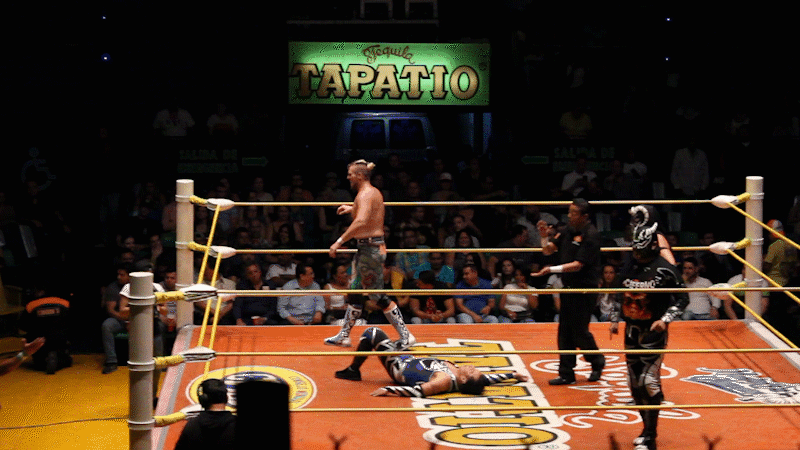
“There’s soccer, there’s baseball, and there’s lucha. That’s part of the national sports. The USA, everybody knows wrestling’s there, but unless you really look for it, you can completely avoid it, not see it on TV, not see it in the stores.”
“I would like to be somebody that could help bring pro wrestling back into the mainstream. Instead of making the fans that are already there happy. I would rather be the guy that gets the moms and dads and aunts and uncles that don’t really watch wrestling to say, ‘Damn, that guy’s fun, let’s watch wrestling Monday night.’“
Wrestling in the United States probably won’t ever become as integral a part of the culture as it is in Mexico, even if just because we’ve more or less passed the point when any one sport or hobby or interest can pervade the mainstream. As Adonis acknowledges, “Now with social media, you don’t need a mainstream, you can just go to the stream you want.” But with projects like “GLOW” asking for a savvier view of proceedings—one which nods to the silliness and still revels in the spectacle—and with a classic heel in the White House, the time might be ripe for the return of Sam Adonis.
